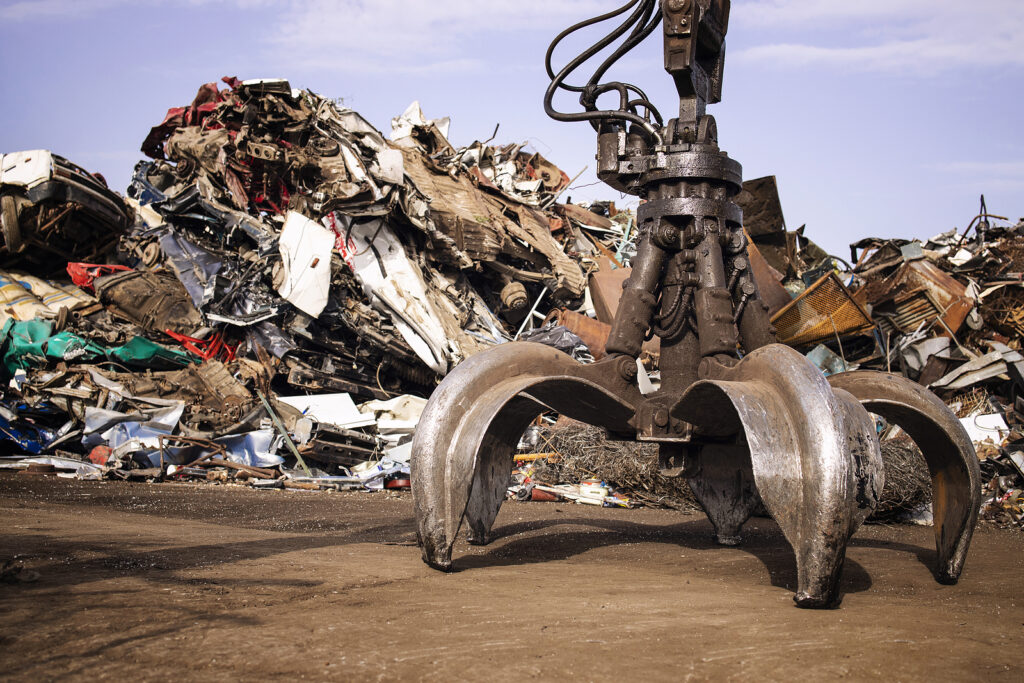Metal recycling is an excellent initiative that can be accomplished by just about anyone and with very few resources. If you are interested in getting started with a scrap metal recycling program, whether at home or for the business, it helps to start with an understanding of ferrous and nonferrous metal materials. After all, these metals will be the basis of everything you select for recycling.
Continue reading to learn some interesting facts about ferrous and nonferrous metal recycling, including the types of metals that fit within these categories, where to recycle metal in your town, and the various benefits that come along with the entire endeavor.

The Difference Between Nonferrous and Ferrous Metals
Ferrous metals, or ferric metals, are distinctive from nonferrous metals because they contain iron; nonferrous metals do not contain iron. The word ferrous actually translates to iron, giving you an easy way to remember this difference. Although metals are not immediately distinguishable as ferrous or nonferrous simply by sight, there is a very simple way to make the determination. All you need is a strong magnet!
That’s right; ferrous metals, or metals that contain traces of iron, are magnetic. Iron and steel are not magnetic, and most ferrous metal objects contain both iron and steel. If the magnet sticks, the metal object contains traces of iron. In some cases, the concentration of iron is too weak to attract a magnet, so additional equipment would be necessary in determining its true composition. Look below to learn some examples of ferrous and non-ferrous metals and their common applications.
Types of Ferric and Non-Ferric Metals
Ferrous metal contains iron, but they can also contain other metals, making it an alloy. Common ferrous metal alloys include cast iron, wrought iron, stainless steel, carbon steel, and mild steel. Common nonferrous metals are copper, aluminum, lead, chromium, titanium, cobalt, brass, zinc, nickel, and precious metals.
Nonferrous Metal Recycling
Because nonferrous metals are lower in volume than ferrous metals, it may seem like they are worth less, but in fact, they are worth more in most cases. Nonferrous metals generally have a higher value per pound compared to steel and iron metals. For this reason, they tend to make up the majority of the metal recycled in the country.
Here in the United States, on an annual basis, research suggests that nonferrous metal recycling centers process an average of:
▶ 1.3 Million Tons of Lead Scrap
▶ 1.5 Million Tons of Copper Scrap
▶ 2.5 Million Tons of Aluminum Scrap
▶ 300 Tons of Zinc Scrap
Why Recycle Metal?
Whether ferrous or nonferrous, all metal should be recycled. Both categories of metal are 100% recyclable and can be reprocessing over and over again. This has many environmental and economic advantages. Not only does metal recycling help us preserve our planet’s natural resources by reducing our need to mine for new ores, but it also reduces air pollution generated by the metal refining process, decrease waste in landfills, boost our local and global economies, creates employment opportunities, promotes energy savings, and even puts cash in your wallet!
How does metal recycling pay off with real cash? Just choose a responsible and professional metal recycling center in Indiana to sell your scrap metal to! Contact Garden City Iron & Metal at 1-888-586-5322 to speak with a professional scrap metal buyer in Indianapolis, Indiana. We accept all scrap metal and metal commodities, including junk cars.
Related Posts:
The Discerning Attributes of Ferrous and Non-Ferrous Metal
Types of Recyclable Precious Metal and Where to Find Them
Popular Grades of Aluminum Metal and Their Current Market Values
